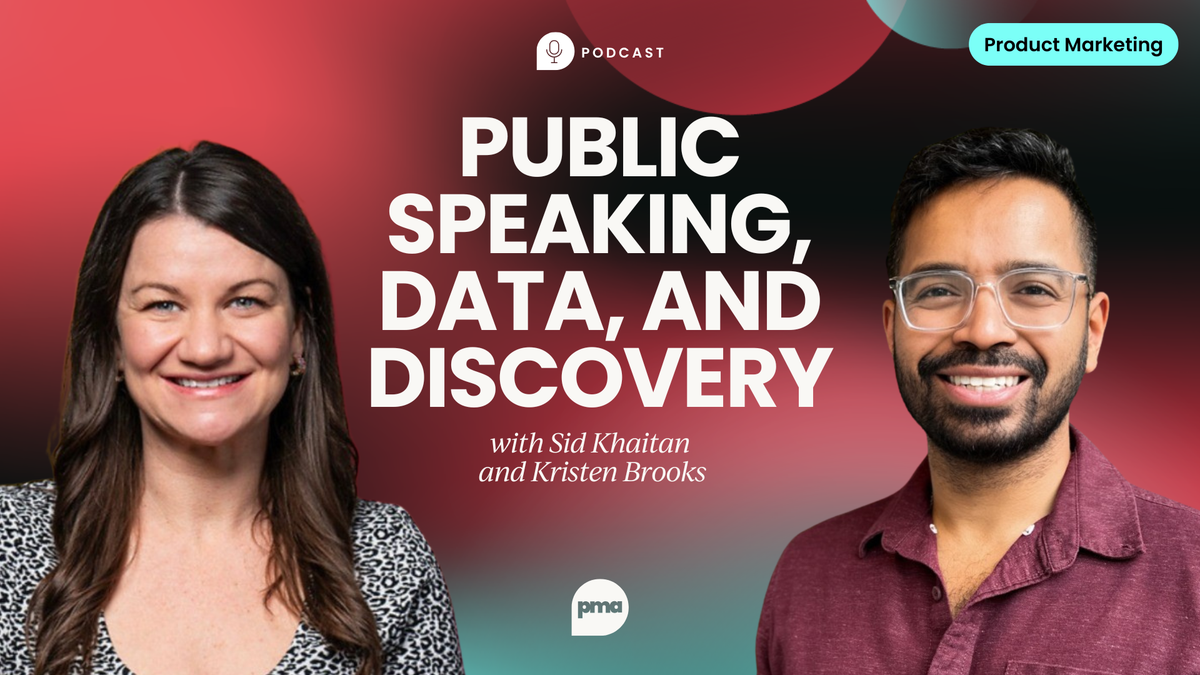Disclaimer: The opinions expressed here are my own and don’t reflect the views of Dynatrace.
PMMs sit at the intersection of many different departments and influence others to gain cross-functional alignment.
Here’s a five-step framework for building influence through strengths, relationships, strategic thinking, alliances, and confident communication.
The PMM paradox
As a Product Marketing Manager (PMM), you’re constantly being asked to deliver impact across multiple teams, without formal authority over any of them.
You need sales to use your messaging, product to act on your insights, and leadership to buy into your strategy. Welcome to the PMM paradox: you own the outcome, not the people.
To help, I’ve created a five-step guide for solo, individual contributor, and founding PMMs to navigate organizational politics and influence outcomes across departments, cross-functional teams, and leadership.
- Know your strengths
- Build strategic relationships
- Think like a leader
- Form cross-functional alliances
- Speak with authority
Why influence matters
As a Principal PMM, I’ve had to understand organizational politics and influence others at medium and large organizations, especially when creating new cross-functional initiatives with repeatable processes.
Examples include creating competitive intelligence, win-loss, and quarterly launch programs, where no program previously existed.
For competitive intelligence (CI), influence is the difference between being a news reporter and a strategic advisor. CI leaders who influence effectively shape product strategy, arm sales, and anticipate market shifts. Influence turns PMMs from executors into operators.
Leading indirectly by influencing others is a skill that will serve you with any project or product, however. Here are five lessons I’ve learned that I hope you’ll find helpful, too!
1) Know your strengths
“Self-awareness” isn’t just a buzzword – it’s how you build your personal brand at your company. Knowing what you’re good at (and where you’re not) helps you build authentic influence.
To lead with influence, you should be a subject matter expert and a go-to person within the company on [fill in the blank – depending on your role]. Even if you’re new to product marketing, the product or the industry, you have certain strengths and expertise from previous roles. Identify what that expertise is!
Start by mapping your strengths (for example, storytelling or data analysis) and gaps (such as technical depth or executive communication). Then, find complementary allies within your organization who balance you out, and invest in mutual support to build influence, trust, and shared success.

2) Build strategic relationships
In addition to the knowledge and skills you’ve already brought to the table, you need to keep learning and developing new skills.
Networking is helpful for learning and skill development, but it’s also critical to navigating organizational politics, especially for product marketing. To create meaningful impact, you need to find out what matters to leadership.
Once you discover executive objectives, you can create projects and track the KPIs that align with their goals. If you’re new to the company or a role, look at your company’s mission, values, annual company-wide goals, interviews with your company’s leaders, and recent earnings call transcripts or slides, if possible.
If you don’t have direct access to leaders, seek out other influencers in your company, the “go-to” people, and learn how their projects align with the company’s goals.
Focus on building quality relationships with leaders or influencers. Find out what they’re working on and see if they might benefit from your PMM support.
You might ask them…
- What are the most significant issues that you think our company is trying to solve or should be solving?
- What would your recommendations be to help your company overcome those hurdles?
- What do you think our customers care most about?
By learning from leaders and developing relationships with influencers/stakeholders across different departments and levels, you’ll find out which teams you can partner with to build your sphere of influence and how you can contribute with your strengths to impactful, high-visibility projects.
Think about how those projects overlap with other teams, how different projects can complement or bolster your efforts, and how you can help them achieve their goals in return.
These conversations can also help with your PMM messaging and positioning and give you ideas for projects that would move the needle for your company. They may eventually become your mentors, champions, and sponsors across the organization.
3) Think like a leader
Once you’ve invested in those strategic relationships, the next step is to think like a leader by connecting the dots across departments. It’s easy to get caught up in launch checklists and battle cards. But politics rewards strategic thinkers – people who can see around corners and frame problems at the company level.
PMMs have greater visibility than other parts of the company, because they work with many stakeholders. You often see across product, sales, marketing, and support. Use that visibility to connect dots that others can’t. Identify gaps between leadership’s goals and execution. Transform those gaps into your opportunity to contribute to top-line goals, while developing your influence, visibility, and clout.
Develop a plan of action
- Once you spot a white space, propose a strategy – not just a list of tasks.
- Create a hypothesis or a point-of-view opinion backed by research and data, and share it with relevant influencers and stakeholders.
- Tie your ideas to company OKRs or KPIs so your influence aligns with top-line goals.
- Create a solid business proposal and solicit your manager’s and relevant stakeholders’ feedback.
- Iterate! It takes more than one draft to create a business plan.
Once you feel the proposal is fully developed, share it with leaders and other influencers to get buy-in, establishing yourself as a strategic visionary and influencer.
By thinking strategically, instead of tactically, you’ll start to be recognized as a leader, even if your title does not (yet) reflect it!
4) Form cross-functional alliances
Next, it’s time to put your strategy to the test. Take some advice from Vanilla Ice – “Stop, collaborate and listen!” You can now implement your strategy since you’ve already identified which stakeholders are working on similar initiatives and how to align with top-level goals.
This means assembling a core cross-functional team with an overarching goal aligned to those high-visibility company initiatives. Make sure you can articulate “what’s in it for them.”
Set yourself up for success
- Develop a RACI chart with your core team to hold them accountable and determine who needs to be updated regularly.
- Establish a regular meeting cadence, break the project into measurable milestones, and align goals with company KPIs (Key Performance Indicators).
- Celebrate and share wins publicly, via regular Slack or email updates.
- Always recognize others’ contributions; otherwise, you risk losing those relationships you developed!
- After each step is complete, hold a post-mortem. Did you validate your hypothesis? If you met or exceeded your goals, celebrate the win and share the news! If not, regroup, review learnings and new data, and iterate on your approach for the next project.
By completing the project, you’ll also have developed new skills, grown business relationships, uncovered new data, and developed new opinions and points of view.

5) Speak up with confidence
In the words of Demi Lovato, “What’s wrong with being confident?” To build influence, you must be willing to speak up, share your opinions, and be persistent. There’s an unspoken rule in many corporate cultures: “Keep your head down and say yes.”
But being a “yes” person rarely leads to meaningful influence – it leads to being overlooked. To have impact, you need visibility. To gain visibility, you need a platform and a point of view. Speaking up and collaborating with other influencers helps you achieve both.
Be a “Yes, and” person
Push back, share your expertise, and lean into your strengths. That’s why they hired you in the first place! If you hear something that doesn’t sound right, even from a leader, let them know (respectfully).
Good leaders are willing to learn from their employees and peers and will respect your point of view, especially when backed by evidence. Be prepared to support your opinions with data-driven insights or customer proof points.
If you’re uncomfortable, start with the “yes, and” approach – borrowed from improvisational theater and used by leaders at companies like Google and Pixar.
It lets you agree with someone’s direction while expanding the idea: “Yes, that’s a great idea – and we can actually test that with customer insights from our last campaign!”
It’s also okay to say you’ll get back to someone later, and it’s better to admit you don’t know than try to make up an opinion or a strategy on the spot. Don’t forget to follow through on your commitments (otherwise, you risk losing influence and authority).
After consistently demonstrating your expertise, leaders will soon start asking for your opinion and invite you to conversations above your level.
Tying it all together with a real-world example
You realize the sales team keeps losing deals to a new competitor, but no one’s sure why. You propose a Competitive Task Force to meet monthly. You gather win/loss data, interview reps, and share your insights. You invite product, analyst relations, investor relations, customer success, and sales colleagues to join in and share their expertise.
Now you’ve created a collaboration hub to share your knowledge on why you’re winning and losing deals, why customers churn, how the larger market perceives your company brand, and where you might have product gaps.
Your team can now create recommendations based on those insights and share them across the organization to influence product direction and communicate your competitive positioning and differentiators without formal authority.
Tips and traps for influencing without authority
Tips
- Map stakeholders and their motivators for high cross-department impact.
- Invest in relationships with influencers at your company and build clout by helping them achieve their goals.
- Think strategically, rather than tactically.
- Seek feedback from influencers on how to frame plans for maximum impact.
- Push back privately, give credit where credit is due, and document successes publicly.
Traps
- Confusing popularity with influence.
- Being pushy without trust.
- Overpromising and underdelivering.
Influencing without authority is less about power, more about presence. You need to:
- Know your strengths
- Collaborate
- Think strategically
- Connect cross-functionally for greater impact
- Share your wins (and the spotlight)
With these five steps, you can create a reputation for yourself and become the kind of PMM people seek out, further increasing your visibility and influence.
Recommended resources
Interested in learning more? Product Marketing Alliance has some great articles on influencing without authority:






